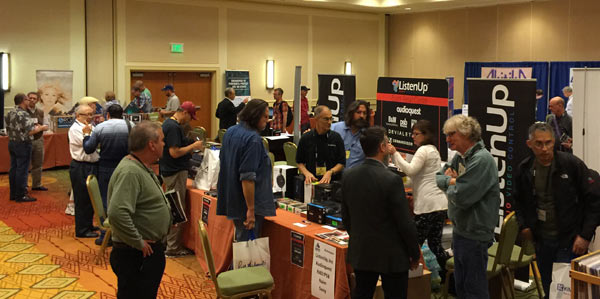RMAF Follow Up
I’m running to get to the university today, so today post is a spray of things that have been bumping around in my brain since the close of the RMAF. No particular order of importance.
My table was near a couple of retired guys offering high-end cables…very high-end cables. A major equipment designer and proponent of DSD was having conversation with them on Saturday afternoon and I couldn’t help but over hear what he was saying. Or perhaps he was speaking excessively loud because he knew I was there…whatever. He started to discuss the science behind the Jitterbug and Regen (I know some of you are going to groan). He described how the Regen is “based on real science” and is a bona fide piece of audiophile gear. To bolster his argument he related a story about a room upstairs that played their demos without the Regen and then inserted one into the USB signal path. He told the gentlemen next to me, “And when they put the Regen in half of the listeners in the room immediately responded to the additional fidelity it provided.”
Finally, a rigorous evaluation of the Regen unit done in a controlled environment! What about the other half of the group…if only 50% thought they heard a change in the sound (given the exact same bits and a new sample clock), that must mean the other listeners didn’t experience the “enhancement” as described by so many others. I remain unconvinced after overhearing this anecdotal exchange and my own experience. I have also had additional conversations with professional engineers and designers that doubt the effectiveness of these devices. If I’m looking to improve the fidelity of my system, I’m going to be investing in things that will make a dramatic difference…not subtle changes.
Here’s another scenario that speaks volumes about the state of affairs in high-end audio…and the whole question of integrity. I had a conversation at the RMAF about high-resolution DACs with a knowledgeable professional. He told me about a small company that makes very high-end DACs and the company’s owner and designer. The company is well known for having pushed the envelop on the sampling rate and word length of PCM digital audio on their DACs (they also support multichannel and multiple versions of DSD). Their current model supports 384 kHz and 32-bit PCM. When I’ve asked about these extreme specs, he assured me that he “hears” a difference…an improvement…in the fidelity of 384 over 192 or 96 kHz. Ok fine.
The person that I spoke to told me that the owner of the company confided in him that he simply lies about the sonic improvements and his ability to hear the difference. Really? He was unabashed about the fact that in order to sell more of his high priced gear, he fabricates information about the performance of his units and what he hears. Am I surprised? I guess not…but I am very disappointed.
Can we trust anyone to tell us the truth about his or her products?
+++++++++++++++++++++++++++++++++++++++++++++++++++++++++++++
The Kickstarter campaign is nearing 600 backers and the first stretch goal of $50,000. If you haven’t yet signed up to support the project, now might be the best time…because you’ll be helping everyone get the new AIX Records 2016 sampler files. Click here to visit the Kickstarter page.


Your quote… “If I’m looking to improve the fidelity of my system, I’m going to be investing in things that will make a dramatic difference…not subtle changes.”
So, does the Benchmark DAC-2 really improve the performance of those Oppo headphones? And are the Oppo headphones comparable to the top rated Audeze LCD-3’s? Either open end or closed?
The quality of the Benchmark DAC2 and the Oppo Headphones is very good…meeting real HD standards. With my recordings, it is dramatic.
Did I read that right?
The person you spoke with said he hears a improvement in fidelity with 384 over 192 or 96 kH
Even after the owner of the DAC manufacturing company had told him he hears no difference but lies to customers. LOL
High End Audio has run off its tracks.
And NO unfortunately there seems to be almost no one whose word you can trust any more.
While I was at RMAF I popped into the Linkwitz Lab room because I’d never had the opportunity to check out a pair of they’re speakers. I listened to both the models they had on hand and was not disappointed. Fantastic sound all around and some of the best I’d heard that day. Now these speakers are predominantly sold as kits and that’s how they were presented. The speaker cable he was using looked like typical 12 or 14 gauge bulk speaker wire, terminated with Speakon connectors and the interconnects looked like generic stuff you’d find at Radio Shack.. Siegfried Linkwitz was sitting beside me conducting the demo, so I leaned over and said to him, “Excuse me, but I don’t see you using any exotic cables with your set up.” He smiled at me and replied, “I only use what is necessary.” It’s a telling comment from a guy who has forgotten more about speakers and crossovers than I will probably ever know!
Nice. Siegfried is turning 80 next month. He’s a true audio God with no desire to be an audio ‘rock star.’ The speakers are fantastic, and so many folks have benefitted from the decades of his work.